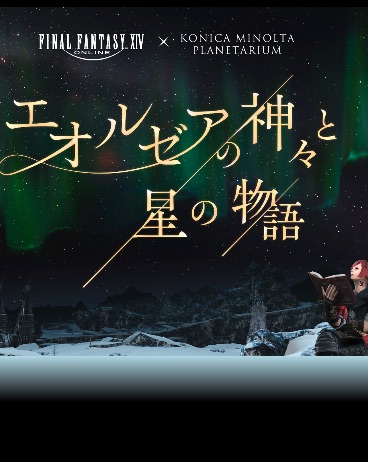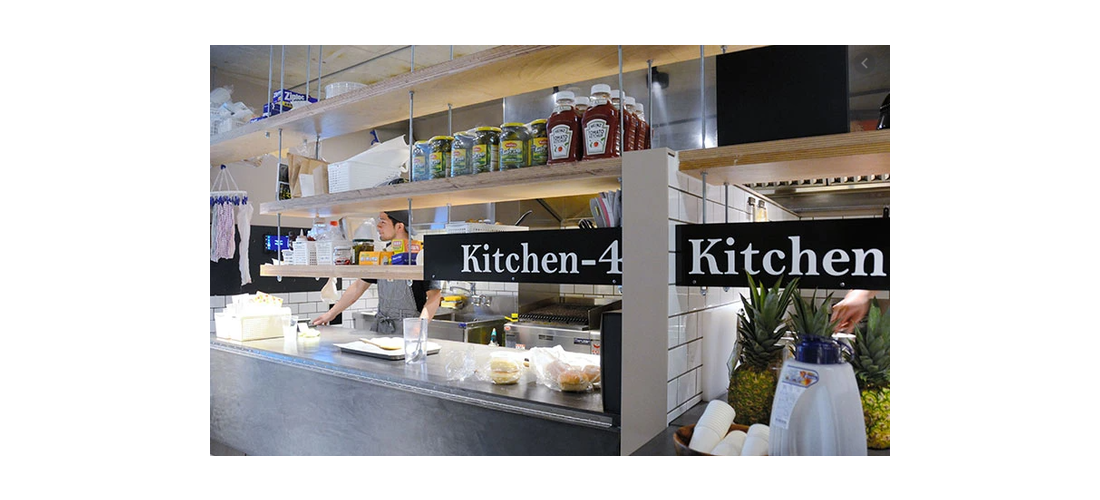CONTENTS
Japan’s COVID-19 situation hasn’t improved, and a state of emergency has been called, but life goes on, and we still have to eat.
The many Japanese supermarket shelves completely empty of instant ramen, and other clear necessities (like melon bread), are a sure sign: people are worried about coronavirus, and especially now that Prime Minister Abe has called a state of emergency, they're staying home. But not everyone can cook, and instant ramen for every meal isn't a great plan either, which is why a number of eateries are still open around Japan. While people are hungry, however, most of them are trying not to be foolish. The public is looking for ways to avoid both infection and starvation, which is why restaurants have been taking on some interesting projects, to keep the people of Japan safe and satiated!
Image Source: M>YOKOO on Retty.me
Protections for Self-Service Eaters
It turns out that a surprising number of restaurants, cafes, and supermarkets in Japan employ self-service systems, where diners take their own tray and a pair of tongs, and choose their meal from a selection… all completely open to the surrounding air. In retrospect, this seems like it might not be a great idea at any time, but when fears about coronavirus "droplets" are spreading quickly, establishments of all kinds are doing their best to make sure their goods don't get contaminated.
Hotels around Japan, like Osaka View Hotel, have temporarily switched from a buffet-style breakfast to trays brought to the table. Supermarkets, which often have an open area containing a selection of prepared grilled and fried foods, have started pre-wrapping each item individually. And since places that sell baked goods in Japan almost always have open racks of food, pastry shops like Mister Donut have started putting thick, protective sheets of plastic over their displays, and taking extra steps to sanitize the tongs and trays.
Image Source: Domino's Official Website
Pizza Delivery – From 2 Meters Away
Pizza is the perfect food when you're stressed about staying home, and can't quite get it together enough to cook dinner, but customers have recently been hesitant even to order delivery. What if that one delivery person becomes a vector for disease? Well major pizza chains have taken the situation into their own hands, and instituted new policies to keep people feeling safe enough to keep ordering pizza.
At Domino's it's called the Zero Contact Drop-Off service (あんしん受取サービス), and at Pizza Hut it's called the Oki Pizza Service (置きピザ), but the protocol is essentially the same. Notify your delivery person that you'd like to participate in the service as you place your order, and when the pizza arrives, they'll place it in front of your door before backing 2 meters (about 6') away, often touted as a "safe distance." Once they confirm from afar that you've received your order, the delivery person goes on their way. At no point do the customer and the delivery person have to come in close contact! Together with thorough disinfecting and excellent hygiene from the pizza places, we can only hope this is enough to any viral spread caused by pizza delivery!
Sources: Kushikatsu Tanaka, Rocket News
Takeout Only! (Japanese Bento Style)
Quite a few restaurants in Japan that previously offered both eat-in and takeout options are shifting to shorter business hours and concentrating on takeout and delivery, and some are really shifting their target customer base. Japanese pubs, called izakaya, are generally where you might go for a night out. They're the bars and eateries where people gather at the end of the day for a good drink, and maybe a bite to eat. And now, apparently, they're where you get your lunchbox as well!
Kushikatsu Tanaka is a chain of izakaya specializing in kushikatsu (串カツ, put simply: fried things on skewers), and they are one of many pubs to put renewed efforts into lunchtime bento boxes for people to take with them and eat while still practicing social distancing. Instead of sitting at a bar, or a table in a crowded room, ordering fried skewers one by one, diners can just drop in and grab their box of kushikatsu to go. In this strange time when we're all switching to Skype-based dates and dinner parties over Zoom, picking up a bento and a beer to enjoy with friends – while still staying home – might be just the thing to bring us through to the light at the end of the coronavirus tunnel.
So, What’s for Dinner?
Have you heard about any other interesting ways that companies in Japan are trying to make things safer during this coronavirus outbreak? We'd love to hear what you think, and any interesting news you've picked up, on the Japankuru twitter, instagram, and facebook!
Details
NAME:Restaurants in Japan
PROFILE
The latest news from Japan - learn what's new in the land of the rising sun, from an international group right on the scene.
COMMENT
FEATURED MEDIA
VIEW MORE
・The new Tokyo flagship for Volcom Japan is a center for all things skateboarding, street fashion, art, and culture, all in the heart of Shibuya! ・Volcom日本旗艦店東京澀谷登場 本格派滑板街頭潮流藝文新據點 #Volcom #japankuru #shibuya #日本購物 #日本潮流 #日本街頭時尚 #澀谷 #東京購物 #東京購物推薦 #東京潮店 #澀谷潮店 #滑板 #雪板 #衝浪 #볼컴 #시부야

Which snacks make the best Japanese souvenirs?~ Jaga Pirika ~ 일본과자 선물 뭐하지?~자가피리카 편~ #pr #calbee #jagapokkuru #japanesesnacks #japanesefood #japanesesouvenir #japantravel #japantrip #naritaairport #hokkaido #나리타국제공항 #일본여행선물 #흔하지않은기념품 #일본쇼핑리스트 #일본과자추천 #고구마과자 #일본간식추천 #일본면세점쇼핑 #개별포장 #일본감자칩 #도쿄나리타공항면세점 #현지인추천 #일본여행 #일본기념품리스트 #자가포쿠루 #자가피리카

Asakusa's Sanja Matsuri, one of the biggest festivals in all of Tokyo, is almost here! Make sure you check out the festival route so you don't miss all the festivities this May. #asakusa #sanjafestival #sanjamatsuri #asakusashrine #sensoji #sensojitemple #japanesefestival #shintoshrine #japaneseculture #tokyo #tokyotrip #tokyotravel #asakusasightseeing #matsuri #japantrip #japantravel #springinjapan #tokyotravel #japankuru #산자마츠리 #아사쿠사 #일본마츠리 #일본여행 #일본5월

Odaiba's DiverCity Tokyo Plaza is home to the famous real-size 20m-tall Unicorn Gundam, and the popular shopping center has even more Gundam on the inside! Check out the Gundam Base Tokyo on the 7th floor for shelves upon shelves of Gunpla, and the Gundam Base Tokyo Annex on the 2nd floor for cool anime merchandise. Both shops have tons of limited-edition items! #pr #odaiba #tokyo #tokyotrip #japantrip #japantravel #PR #divercity #divercitytokyoplaza #tokyoshopping #gundam #unicorngundam #gundambasetokyo #anime #otaku #gunpla #japankuru #오다이바 #다이바시티도쿄 #오다이바건담 #건담 #일본건담 #건프라 #건담베이스도쿄

Evangelion, in miniature!? Tokyo's SMALL WORLDS Miniature Museum is actually a must-see for anime lovers, thanks to the tiny Evangelion Hangar and Tokyo-III... plus a whole universe of other scenes both real and fictional. #smallworlds #smallworldstokyo #tokyotrip #tokyotravel #evangelion #eva #anime #miniature #miniatures #animefigure #japantrip #japantravel #에반게리온 #스몰월드 #에반겔리온 #スモールワールズ #오다이바 #아리아케

Have you sat down for a snack at Sumida Aquarium yet? This aquarium next to Tokyo Skytree is known for its penguins and garden eels, but we can't get enough of their cute snacks! There are lots of good seats around the aquarium, too, so it almost feels like one big cafe. 🐧 • Find out more at Japankuru.com! (Link in bio.) • #japankuru #sumidaaquarium #skytree #tokyoskytree #solamachi #sumida #tokyo #tokyotrip #tokyotravel #aquarium #japanesesweets #themecafe #すみだ水族館 #Japan #日本 #일본 #Japon #ญี่ปุ่น #Japão #япония #japantravel #日本旅行 #日本旅遊 #japan_of_insta #japantrip #traveljapan #japan🇯🇵 #igerstokyo #explorejapan

For anime fans, the Evangelion areas at Small Worlds Miniature Museum are a must see! The tiny miniature people in the Evangelion Hangar look like ants beneath the moving Unit-01, Unit-00, and Unit-02! And over in Tokyo-III, characters like Shinji, Rei, and Katsuragi live life on a miniature scale. #odaiba #tokyo #tokyotrip #japantrip #japantravel #ariake #smallworlds #miniaturemuseum #smallworldstokyo #tokyotravel #evangelion #eva #anime #miniature #miniatures #animefigure #japankuru #스몰월드 #에반게리온 #오다이바 #오다이바관광 #오다이바스몰월드 #미니어쳐



























































